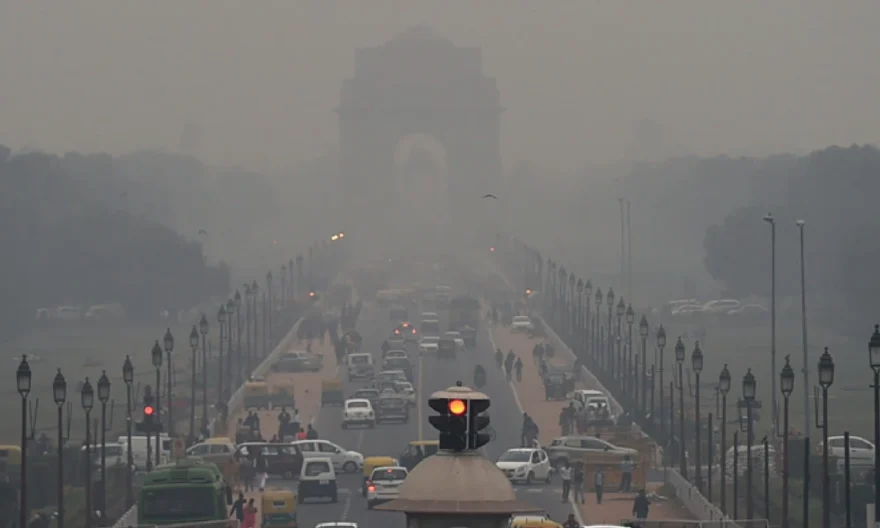
Delhi’s air quality on Thursday has fluctuated between the very poor and severe categories as unfavorable meteorological conditions hindered the dispersion of pollutants.
Recent findings from a joint project by the Delhi government and IIT-Kanpur found that vehicular emissions accounted for about 38% of the capital’s air pollution. This is projected to rise to 40% on Thursday.
Secondary inorganic aerosols particles such as sulfate and nitrate that are formed in the atmosphere due to the interaction of gases and particulate pollutants from sources like power plants, refineries, and vehicles is the 2nd major contributor to Delhi’s foul air, accounting for 30 – 35% of the air pollution in the city over the last few days.
An official at the India Meteorological Department stated that calm winds and low temperatures are allowing the accumulation of pollutants and relief is unlikely over the next few days.
Delhi’s Air Quality Index stood at 393 at 9 am on Thursday. Its 24-hour average AQI, recorded at 4 pm every day, stood at 401 on Wednesday. It was 397 on Tuesday. It was 358 on Monday and 218 on Sunday, 220 on Saturday, 279 on Friday and 437 on Thursday.
Neighbouring Ghaziabad (358), Gurugram (325), Greater Noida (343), Noida (337) and Faridabad (409) also recorded very poor to severe air quality.
An AQI between 0 and 50 is considered good, 51 and 100 satisfactory, 101 and 200 moderate, 201 and 300 poor, 301 and 400 very poor, 401 and 450 severe and above 450 severe plus.
Delhi’s air quality dropped over the last few days despite the state government implementing stringent measures, including a ban on construction work and the entry of diesel-guzzling trucks into the city, to control pollution.
According to IQAir, a Swiss company that specialises in air quality monitoring, Delhi was the most polluted city in the world on Wednesday, followed by Lahore and Mumbai.
A system developed by the Pune-based Indian Institute of Tropical Meteorology to identify the contribution of different pollution sources showed stubble-burning accounted for 23% of the air pollution in the capital on Wednesday and 11% on Thursday. It is likely to come down to 4% on Friday.
An official of the Commission for Air Quality Management earlier said stringent measures, including a ban on construction work and the entry of polluting trucks in the national capital, under the final stage of the central government’s air pollution control plan called the Graded Response Action Plan will continue until further orders.
Earlier this week, Delhi Environment Minister Gopal Rai stated that the city government may implement the odd-even car rationing scheme if the AQI crosses the 400 mark.
The government last week postponed the implementation of the scheme, which permits cars to operate on alternate days based on the odd or even last digit of their registration numbers, after a notable improvement in the city’s air quality due to rain on Friday.
Doctors say breathing in the polluted air of Delhi is equivalent to the harmful effects of smoking approximately 10 cigarettes a day.
They stated, prolonged exposure to high levels of pollution can cause or exacerbate respiratory problems such as asthma, bronchitis and chronic obstructive pulmonary disease and dramatically raise the risk of cardiovascular disease.
Unfavourable meteorological conditions, combined with vehicular emissions, paddy-straw burning, firecrackers and other local pollution sources, contribute to hazardous air quality levels in Delhi-NCR during winters.
According to a Delhi Pollution Control Committee analysis, the city experiences peak pollution from November 1 – 15, when the number of stubble-burning incidents in Punjab & Haryana increases.
On Wednesday, 2,544 fresh stubble burning incidents were reported in Punjab, taking the total number of such fires to 30,661 since September 15.
According to a report compiled by the Energy Policy Institute at the University of Chicago in August, air pollution is shortening lives by almost 12 years in Delhi.




